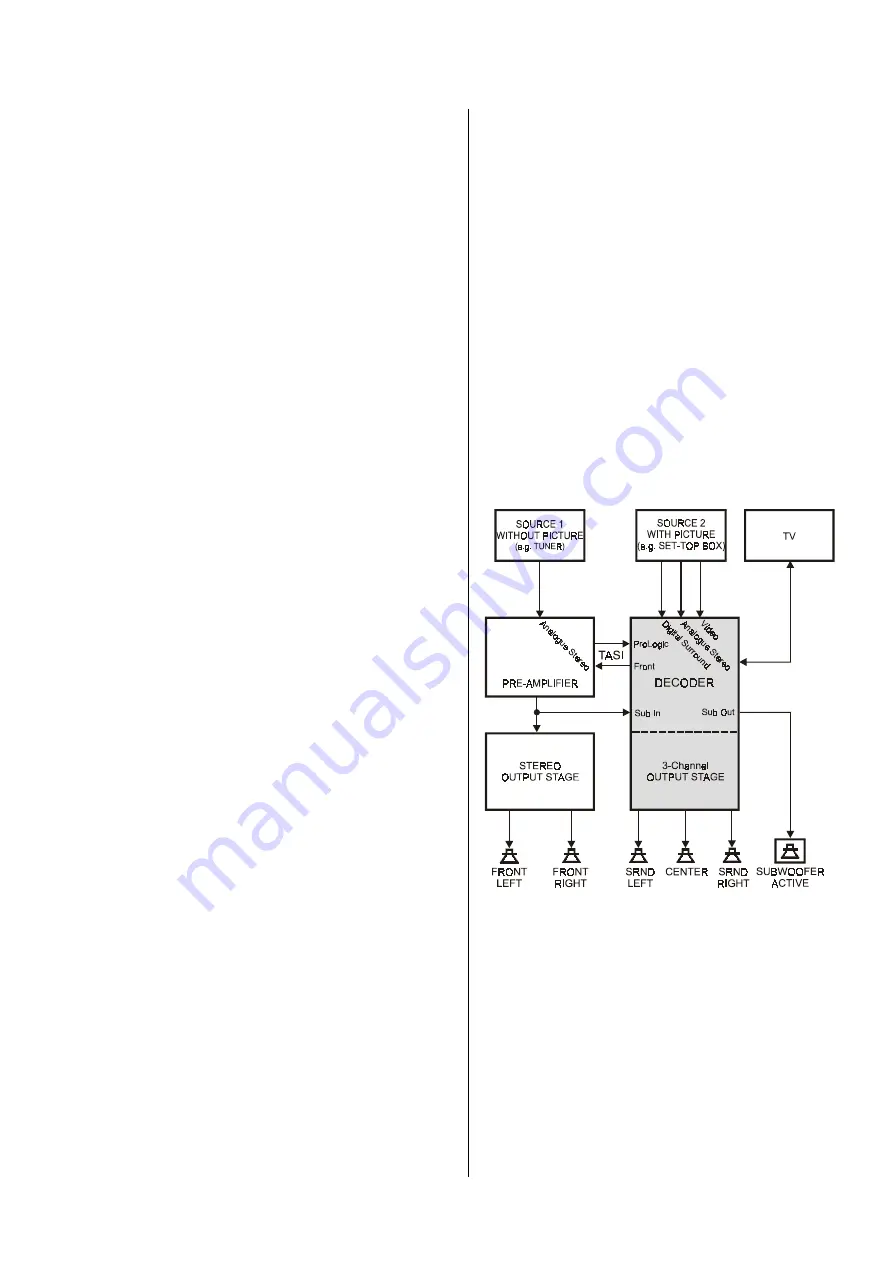
49
The
surround system
Multi-channel reproduction based on surround technol-
ogy does indeed open up new worlds of experience, but
the technical implementation of a multi-channel surround
system does involve a number of potential pitfalls. Many
existing surround systems have gained a reputation for
no more than moderate sound quality, especially when
used in normal stereo mode.
The reason for this lies in the tiny magnitude of the sen-
sitive analogue stereo signals. These signals are meas-
ured in the range of just a few Millivolts (thousandths of a
Volt), and unwanted interference to these signals can be
perceived by the human ear even when a thousand
times smaller than that. Conventional surround amplifiers
feature a single case in which digital signals and high-
frequency video signals live in the same space as the
sensitive analogue signals, and this represents an open
invitation for interference between the various signals.
This compromise solution is entirely unacceptable to us
at
, so for our surround system we developed an
arrangement in which the various signal processing
sections were kept entirely apart. The system therefore
comprises two specialised devices: an analogue two-
channel stereo amplifier is used to process high-quality
stereo signals, while the digital surround signals are
processed in the surround decoder which is an inde-
pendent machine.
In the
system the analogue and digital sub-
assemblies are separated from each other completely,
and this eliminates the danger of interference to the
delicate analogue signals. The net result is that there is
absolutely no danger of a loss in quality in analogue
stereo reproduction.
To make it possible to integrate the surround decoder
easily into an existing
system, we developed the
surround interface (TASI), which also provides the
means to process and reproduce analogue signals, e.g.
Dolby Surround encoded source material.
This interface is the key to integrating the decoder ele-
gantly into the overall system. At the same time the de-
coder has absolutely no effect on normal stereo signals,
since it is completely removed from the signal path dur-
ing normal stereo operations.
Not even the length of the signal paths is changed; in
stereo mode all signals remain in the pre-amplifier sec-
tion of the amplifier, i.e. they are not forced to make a
detour through the surround decoder.
When the system is used in Pro Logic II mode, the TASI
interface also ensures that the decoder is looped in at
the ideal point and at the optimum level in terms of signal
processing, i.e. directly after the source selector switch.
An additional advantage of the TASI interface is that it
makes it possible to exploit the superb output stages of a
typical
stereo system for the front channels when in
surround mode.
To ensure that the sound from the whole system is as
balanced and harmonious as possible, the output stages
built into the decoder are identical in circuit design to our
stereo output stages. This design philosophy ensures
identical frequency, phase and transient behaviour on all
channels, combined with perfectly balanced dynamic
characteristics.
The
surround philosophy also provides further ad-
vantages: two separate pre-amplifier circuits are present,
each with its own volume and tone control functions: a
stereo pre-amplifier and an independent six-channel pre-
amplifier in the surround decoder.
It is therefore possible to adjust the levels and tone set-
tings separately to meet the different requirements for
stereo and surround modes. When you switch mode, the
correct settings automatically take effect.
Содержание DD 1230 R
Страница 1: ...V 2 7 Bestell Nummer 9103 0282 OPERATING INSTRUCTIONS DD 1230 R DD 1530 R ...
Страница 33: ...33 Connecting the digital surround decoder to a TV set and the surround loudspeakers DD 1530 R ...
Страница 35: ...35 Connecting the DD 1530 R to a integrated amplifier with TASI and RLINK sockets ...
Страница 52: ... elektroakustik GmbH Co KG Herford Germany ...




































